Articles tagged jwt
A Comparison of Cookies and Tokens for Secure Authentication
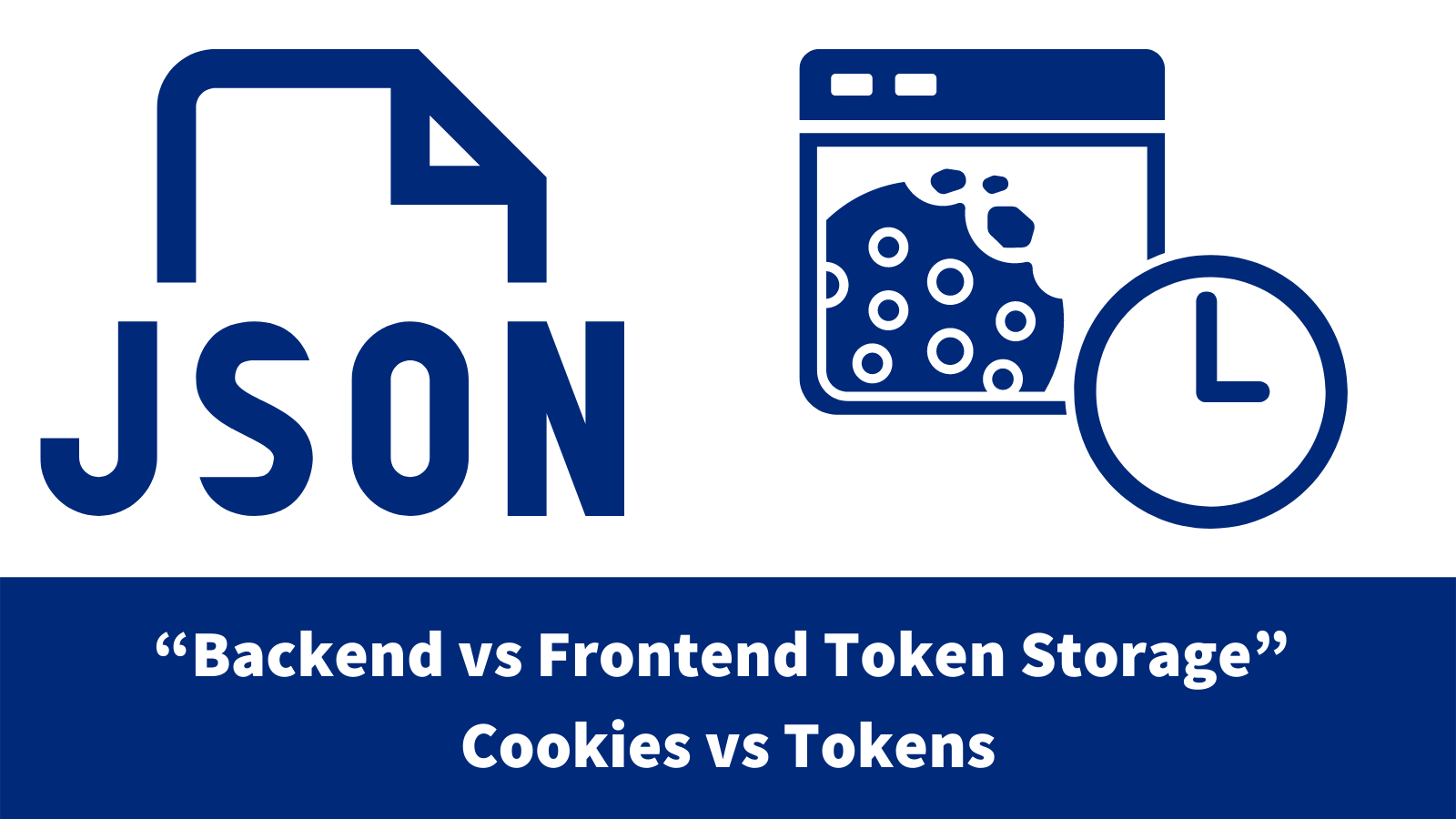
Access control in websites and web applications is a top priority for security, but how you set up access depends on how you store the data to be authenticated. This, in turn, enables user authorization. Cookies and tokens are two common ways of setting up authentication. Cookies are chunks of data created by the server and sent to the client for communication purposes. Tokens, usually referring to JSON Web Tokens (JWTs), are signed credentials encoded...
How to Write a Secure Python Serverless App on AWS Lambda

Modern authentication systems generate JSON Web Tokens (JWT). While there are several types of JWTs, we’re concentrating on access tokens. When a user successfully logs in to an application, a JWT is generated. The token is then passed in all requests to the backend. The backend can then validate the token and reject all requests with invalid or missing tokens. Today, we are going to build a simple web application that uses the Okta authentication...
A Beginner's Guide to JWTs
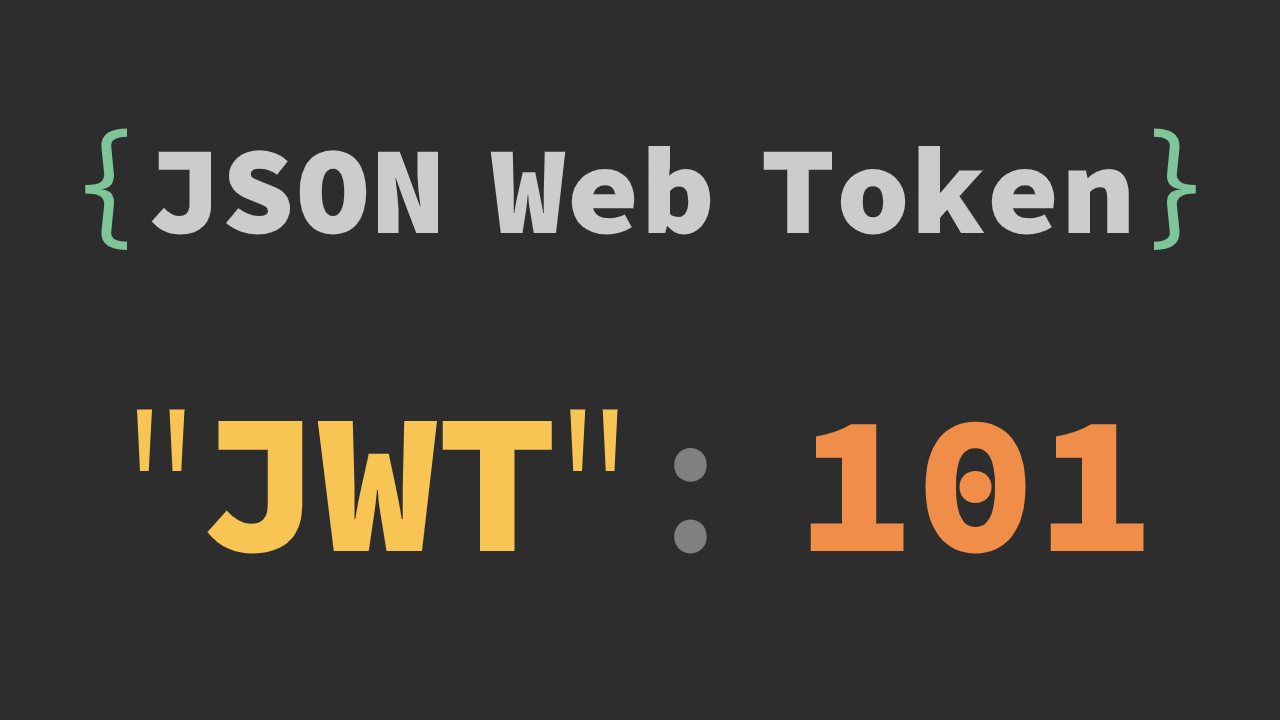
JSON Web Tokens (JWT) are used everywhere (even places they shouldn’t be). This post will cover the basics of what you need to know about JWT and the related specifications in the Javascript Object Signing and Encryption (JOSE) family. JWT is pronounced "jot". Table of Contents What is a JWT? How JWTs Are Used JWT Structure JWT Claims JWT Header JWT Signature Problems with JWTs Learn More About JWT What is a JWT? A JWT...
Protecting a Laravel API with JWT

With the increasing popularity of single-page apps and the growing API economy, JSON Web Tokens (JWTs) are becoming a very popular method for authenticating users. Rather than relying on the server to store the user’s state, JWTs encode information in a keyed payload stored on the client. JWTs are not inherently less secure than server-side session storage. But developers should understand the tradeoffs and know what to do if a JWT is compromised. You should...
Build a Modern API using Fastify and Node.js

Fastify is just as the name implies, fast. Not just in terms of development speed—its low overhead means the server is fast as well. When writing APIs, speed on both sides is paramount. Fastify is a web framework for Node.js that was designed for efficiency. Fastify is fully extensible with hooks, plugins, and decorators. It is schema-based, meaning you can define your response and request objects in your routes and have Fastify do the data...
JWT vs Opaque Access Tokens: Use Both With Spring Boot
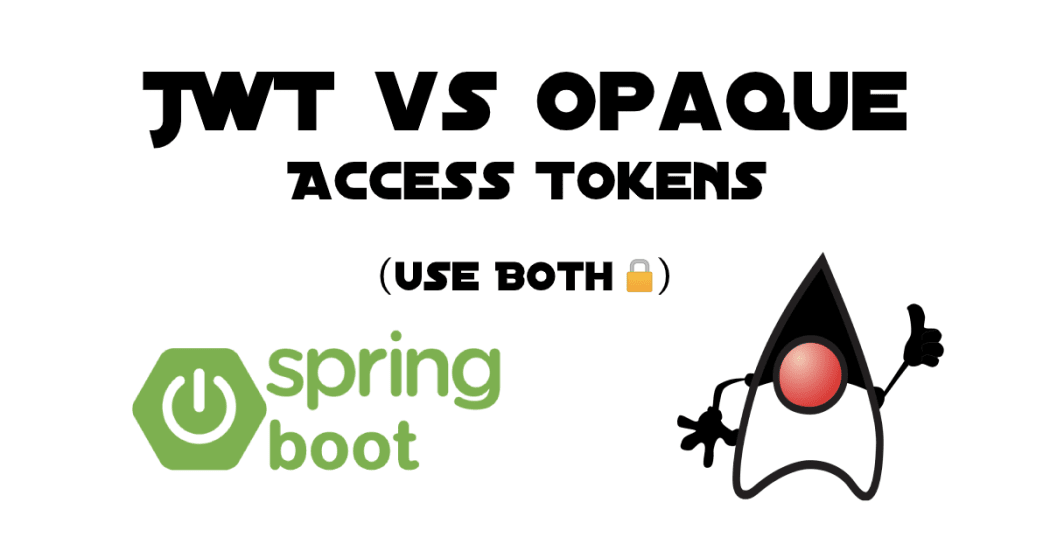
The topic of validating an OAuth 2.0 access tokens comes up frequently on this blog. Often we talk about how to validate JSON Web Token (JWT) based access tokens; however, this is NOT part of the OAuth 2.0 specification. JWTs are so commonly used that Spring Security supported them before adding support for remotely validating tokens (which is part of the OAuth 2.0 specification.) In this post, you will build a simple application that takes...
A Thorough Introduction to PASETO

Today I’m going to introduce you to one of my favorite pieces of security technology released in the last several years: PASETO (platform-agnostic security tokens). PASETO is a relatively new protocol, designed by Scott Arciszewski in early 2018 that is quickly gaining adoption in the security community. While PASETO is still a young technology, I thought it’d be interesting to take an in-depth look at it, since it’s both incredibly useful and solves a lot...
JWTs in React for Secure Authentication

Although authentication is a common requirement for web apps, it can be difficult to get it right, especially if you’re by yourself or part of a small team. That’s why many sites choose to use OAuth 2.0 to let a third-party handle authentication for them. They just need to know how to decode a JSON Web Token (JWT), rather than how to store a bunch of user information and pray they aren’t the next company...
Build a Secure React Application with JWTs and Redux

If you’ve worked with React at all, chances are you’ve at least heard of Redux. But you may not know what it is, how it fits in with React, or how to use it in your app. It can sometimes be complicated to set up but can be a very useful addition to a React app depending on your use cases. And if you’ve done much work with web apps, you also probably know how...
Build a REST API Using Java, MicroProfile, and JWT Authentication
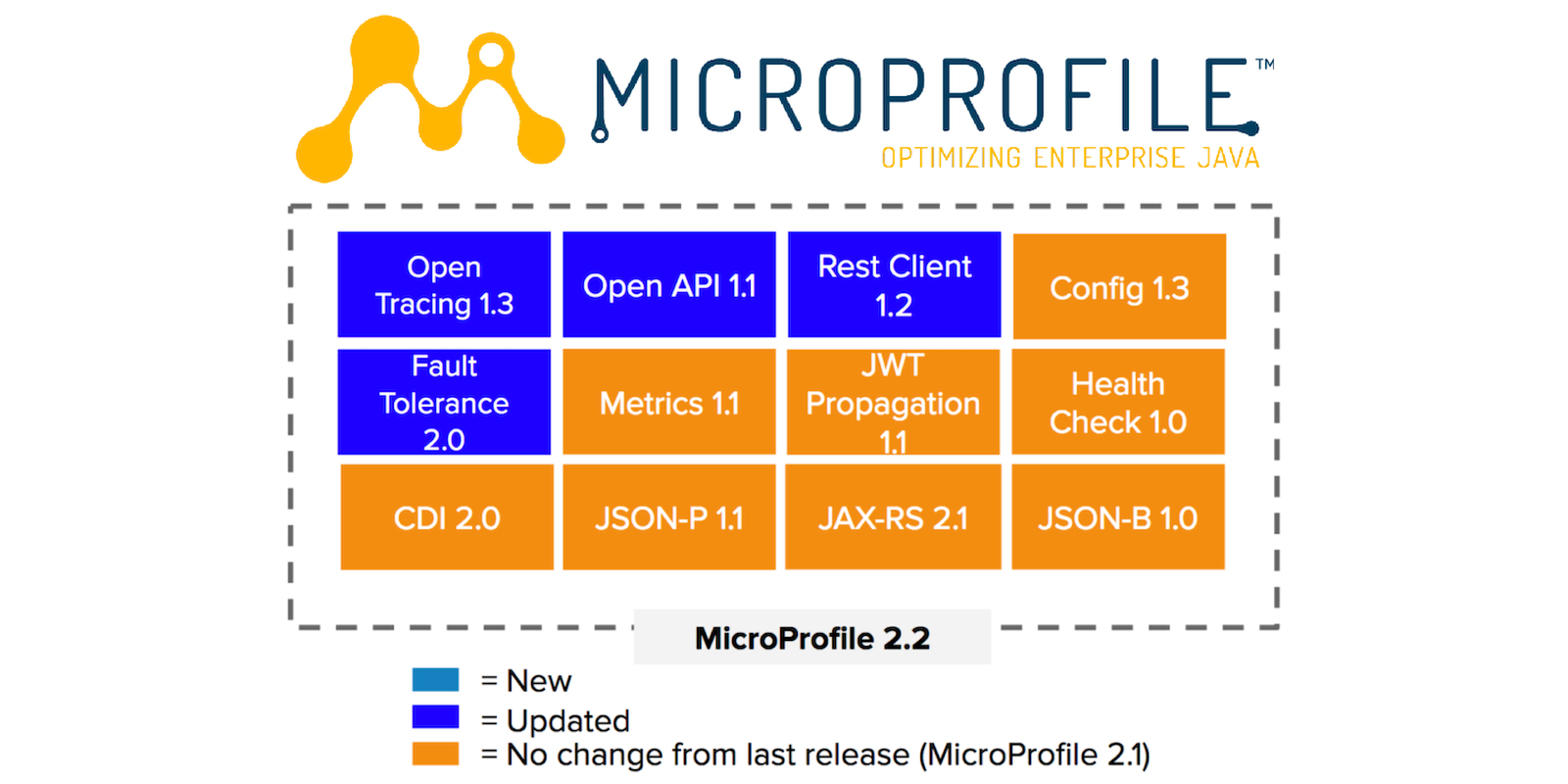
In this post, you will learn how to build a simple REST API using Eclipse MicroProfile and secure it using JSON Web Token (JWT) authentication. You’ll also use a free developer account from Okta to configure an OAuth 2.0 / OpenID Connect (OIDC) application as the OAuth provider, with role-based authorization. That was a lot of jargon. Let’s define a few of the terms (and introduce a few more!). Note: In May 2025, the Okta...
Decode JWTs in C# for Authorization

There are two main steps in securing an application: authentication and authorization. Authentication is easy enough. A user enters a username and password (maybe even a second factor) to prove (authenticate) who they are. Authorization is a little less cut and dried. There are lots of factors that go into what an authenticated user is authorized to do. First, you need some information about the user that just authenticated. Many modern web apps use JSON...
Angular Authentication with JWT

User registration and authentication are one of the features that almost no web application can do without. Authentication usually consists of a user entering using a username and a password and then being granted access to various resources or services. Authentication, by its very nature, relies on keeping the state of the user. This seems to contradict a fundamental property of HTTP, which is a stateless protocol. JSON Web Tokens (JWTs) provide one way to...
Token Authentication in PHP

JSON Web Tokens (JWTs) have turned into the de-facto standard for stateless authentication of mobile apps, single-page web applications, and machine-to-machine communication. They have mostly superseded the traditional authentication method (server-side sessions) because of some key benefits: They are decentralized and portable (you can request a token from a dedicated service, and then use it with multiple backends) There is no need for server-side sessions - a JWT can contain all the required information about...
Build a Simple REST API in PHP

REST APIs are the backbone of modern web development. Most web applications these days are developed as single-page applications on the frontend, connected to backend APIs written in various languages. There are many great frameworks that can help you build REST APIs quickly. Laravel/Lumen and Symfony’s API platform are the most often used examples in the PHP ecosystem. They provide great tools to process requests and generate JSON responses with the correct HTTP status codes....
Modern Token Authentication in Node with Express
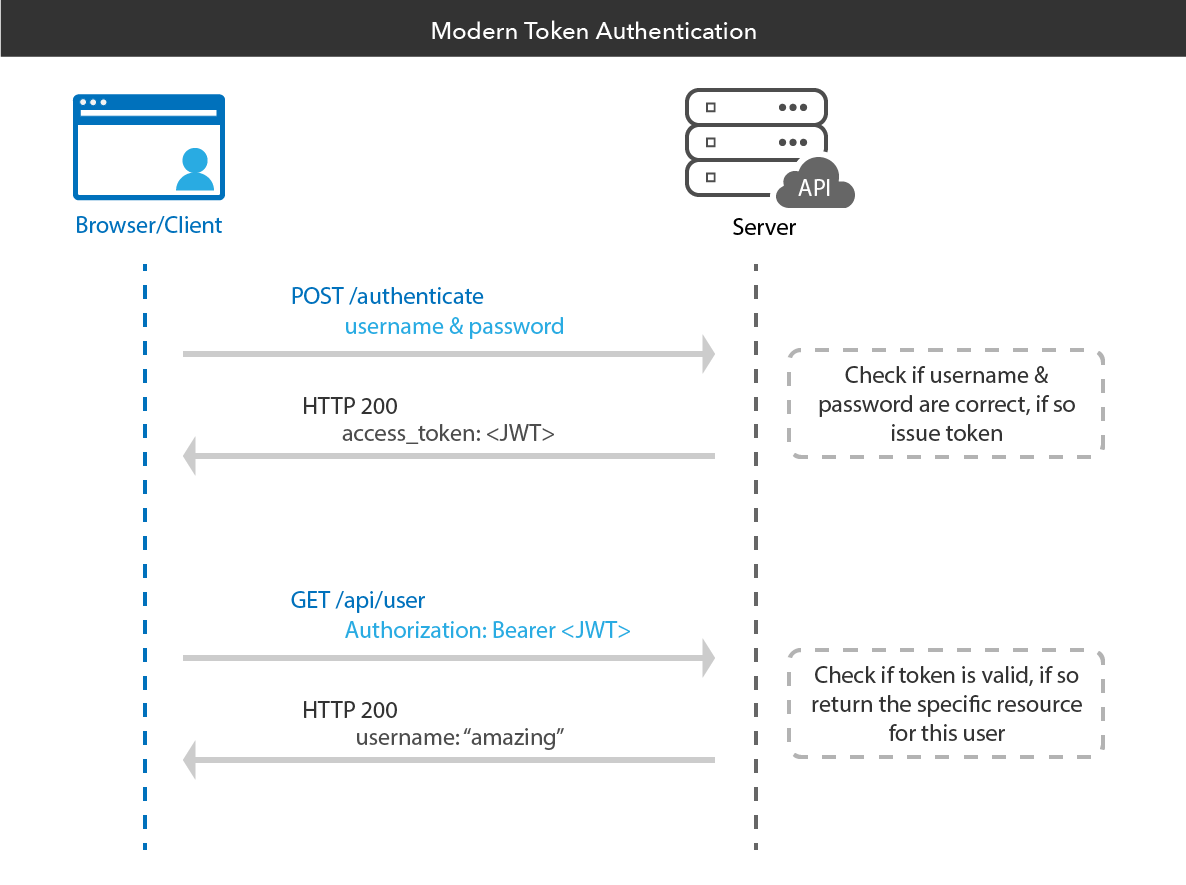
Token authentication is the hottest way to authenticate users to your web applications nowadays. There’s a lot of interest in token authentication because it can be faster than traditional session-based authentication in some scenarios, and also allows you some additional flexibility. In this post, I’m going to teach you all about token authentication: what it is, how it works, why you should use it, and how you can use it in your Node applications. Let’s...
Create and Verify JWTs in PHP with OAuth 2.0

JSON Web Tokens (JWTs) allow you to implement stateless authentication (without the use of server-side sessions). JWTs are digitally signed with a secret key and can contain various information about the user: identity, role, permissions, etc in JSON format. This information is simply encoded and not encrypted. However, because of the digital signature, the payload cannot be modified without access to the secret key. JWTs are a relatively hot topic as they are widely used...
Create a Secure Spring REST API

“If it is useful, it will be modified.” Those words of wisdom came from a QA teacher of mine, to explain that all software evolves when it becomes useful to someone, and for as long as it is useful. We all know this. Users ask us for new features, bug fixes and changes in domain logic every day. As any project (especially a monolith) grows it can begin to become difficult to maintain, and the...
Build a Basic App with Spring Boot and JPA using PostgreSQL

Every non-trivial application needs a way to save and update data: a resource server that is accessible via HTTP. Generally, this data must be secured. Java is a great language with decades of history in professional, enterprise development, and is a great choice for any application’s server stack. Within the Java ecosystem, Spring makes building secure resource servers for your data simple. When coupled with Okta, you get professionally maintained OAuth and JWT technologies easily...
Create and Verify JWTs with Node

Authentication on the internet has evolved quite a bit over the years. There are many ways to do it, but what worked well enough in the 90s doesn’t quite cut it today. In this tutorial, I’ll briefly cover some older, simpler forms of authentication, then show you how a more modern and more secure approach. By the end of this post, you’ll be able to create and verify JWTs yourself in Node. I’ll also show...
Tutorial: Create and Verify JWTs in Java

Java support for JWT (JSON Web Tokens) used to require a lot of work: extensive customization, hours lost resolving dependencies, and pages of code just to assemble a simple JWT. Not anymore! This tutorial will show you how to use an existing JWT library to do two things: Generate a JWT Decode and verify a JWT You’ll notice the tutorial is pretty short. That’s because it’s that easy. If you’d like to dig deeper, take...
Simple Token Authentication for Java Apps

JSON Web Tokens have quickly become the standard for securing web applications, superseding older technologies like cookies and sessions. Used properly, they address a range of security concerns, including cross-site scripting attacks (XSS), man-in-the-middle attacks (MITM), and cross-site request forgery (CSRF). They also give us the benefit of inspectable metadata and strong cryptographic signatures. In this post, I’ll take a deep dive into JWTs. First, I’ll cover some theoretical ground explaining how they work. After...
Build a Java REST API with Java EE and OIDC
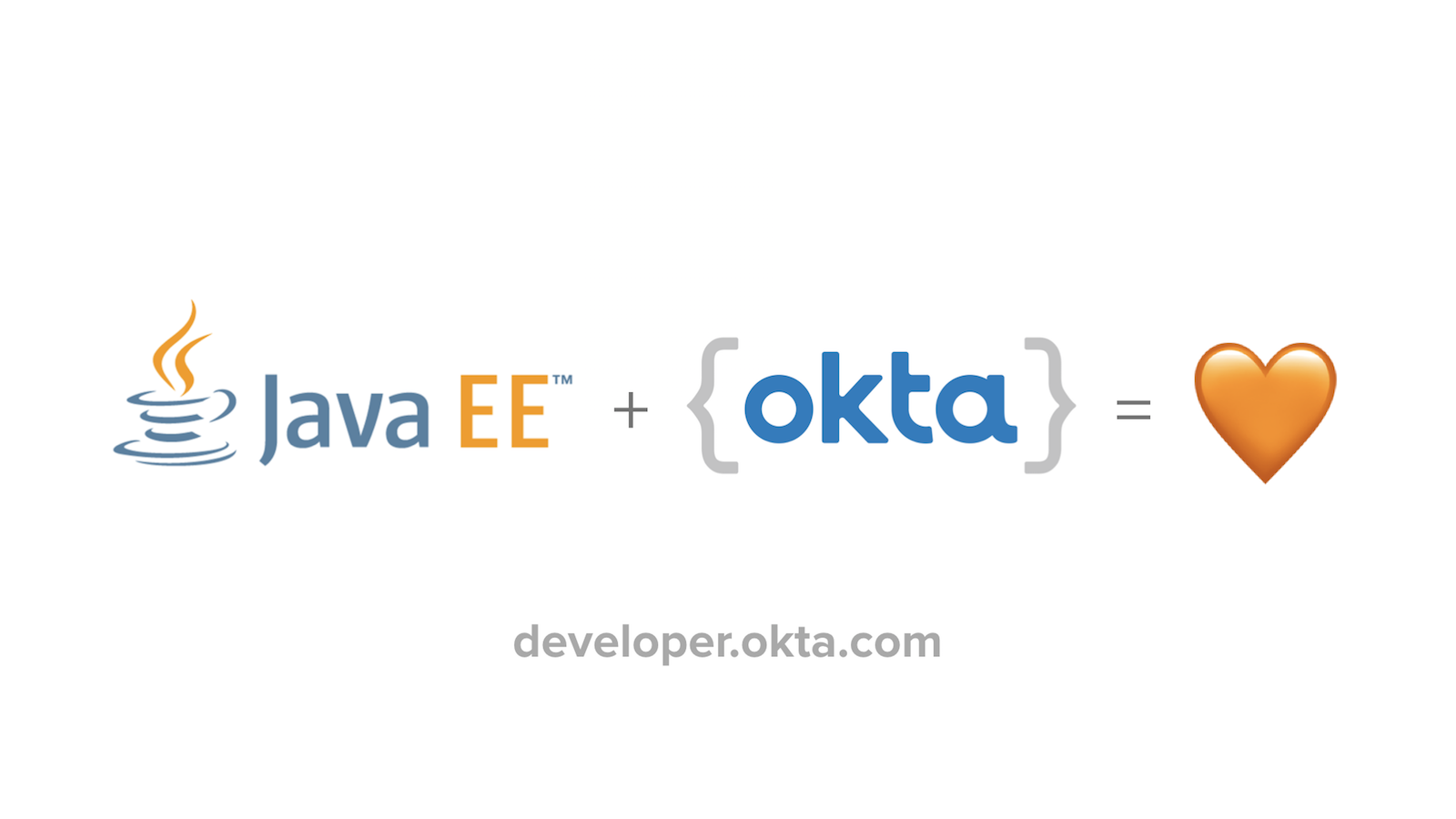
Java EE allows you to build Java REST APIs quickly and easily with JAX-RS and JPA. Java EE is an umbrella standards specification that describes a number of Java technologies, including EJB, JPA, JAX-RS, and many others. It was originally designed to allow portability between Java application servers, and flourished in the early 2000s. Back then, application servers were all the rage and provided by many well-known companies such as IBM, BEA, and Sun. JBoss...
What Happens If Your JWT Is Stolen?
All of us know what happens if our user credentials (email and password) are discovered by an attacker: they can log into our account and wreak havoc. But a lot of modern applications are using JSON Web Tokens (JWTs) to manage user sessions—what happens if a JWT is compromised? Because more and more applications are using token-based authentication, this question is increasingly relevant to developers and critical to understand if you’re building any sort of...
Secure a Node API with OAuth 2.0 Client Credentials
Securing server-to-server API services can be tricky. OAuth 2.0 is an excellent way to offload user authentication to another service, but what if there is no user to authenticate? In this article, I’ll show you how you can use OAuth 2.0 outside the context of a user, in what is also known as the Client Credentials Flow. Instead of storing and managing API keys for your clients (other servers), you can use a third-party service...
Why JWTs Suck as Session Tokens
JSON Web Tokens (JWTs) are so hot right now. They’re all the rage in web development: Trendy? ✓ Secure? ✓ Scalable? ✓ Compact? ✓ JSON? ✓ With all these amazing things going for JWTs, they seem like an unstoppable hype train headed straight for Stack Overflow fame and fortune! But… today I’m here to talk with you about the downsides of using JWTs. Specifically, why it’s a bad idea to use JWTs as session tokens...
Secure a Spring Microservices Architecture with Spring Security, JWTs, Juiser, and Okta
You’ve built a microservices architecture with Spring Boot and Spring Cloud. You’re happy with the results, and you like how it adds resiliency to your application. You’re also pleased with how it scales and how different teams can deploy microservices independently. But what about security? Are you using Spring Security to lock everything down? Are your microservices locked down too, or are they just behind the firewall? This tutorial shows you how you can use...
REST Service Authorization with JWTs
Many companies are adopting micro-services based architectures to promote decoupling and separation of concerns in their applications. One inherent challenge with breaking applications up into small services is that now each service needs to deal with authenticating and authorizing requests made to it. Json Web Tokens (JWTs) offer a clean solution to this problem along with TLS client authentication lower down in the stack. Wils Dawson and I presented these topics to the Java User...